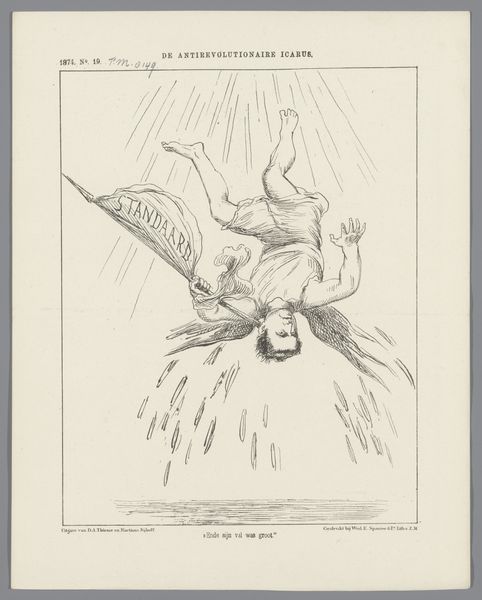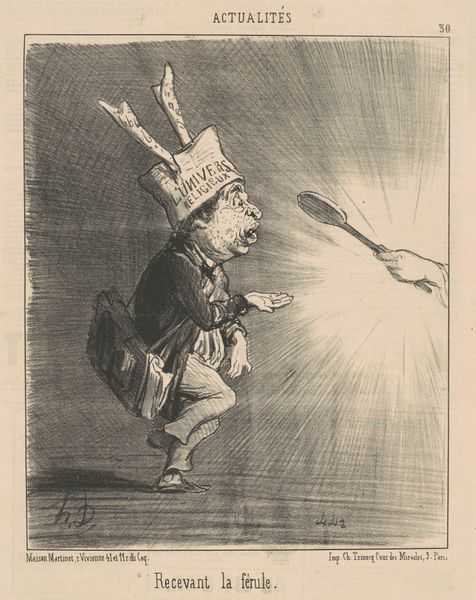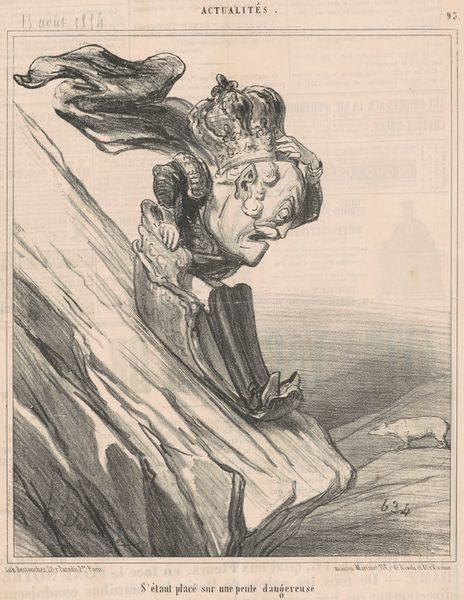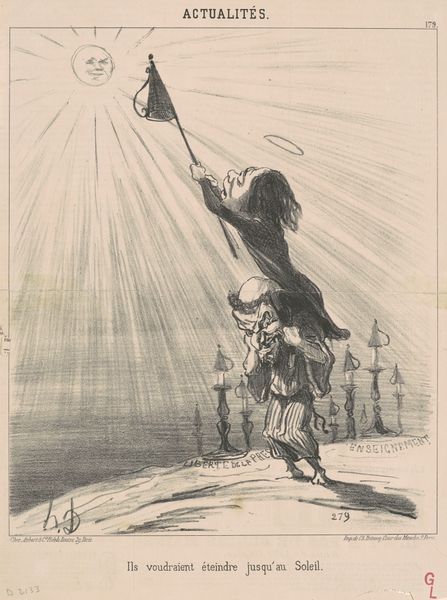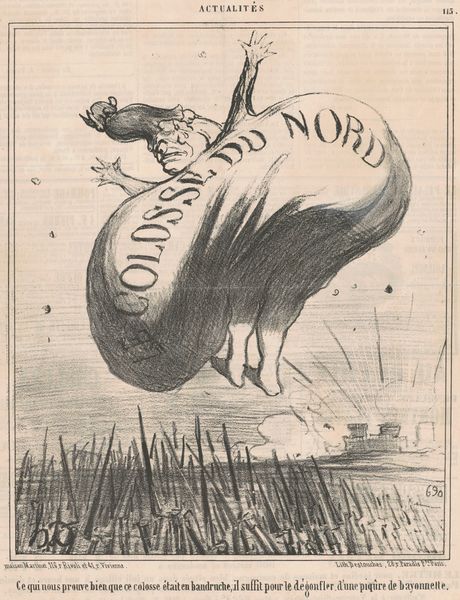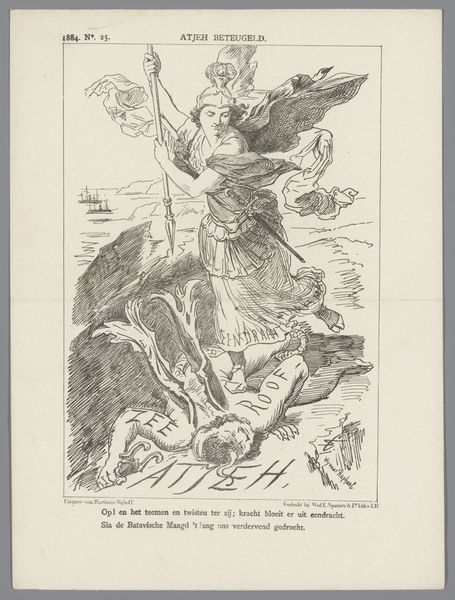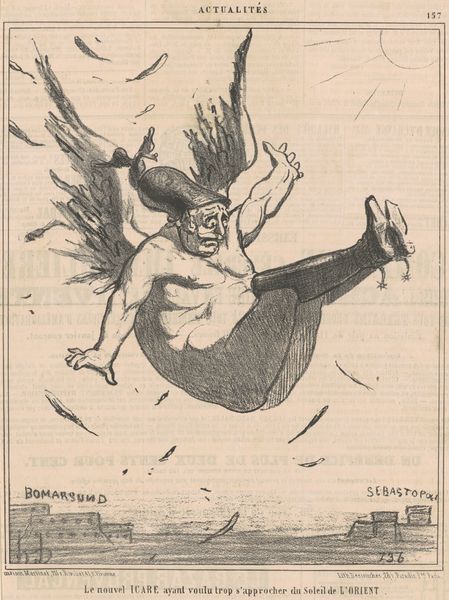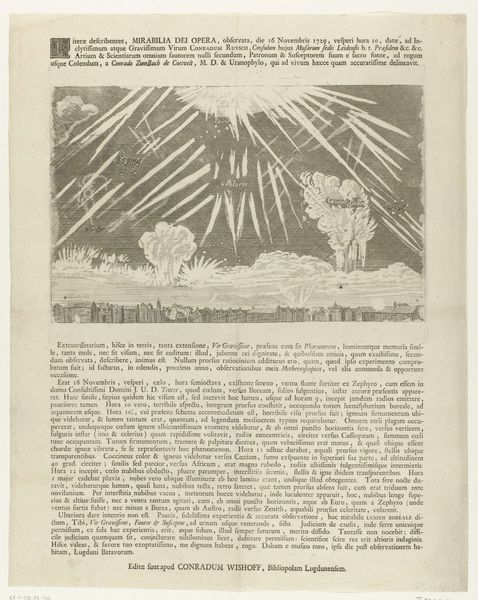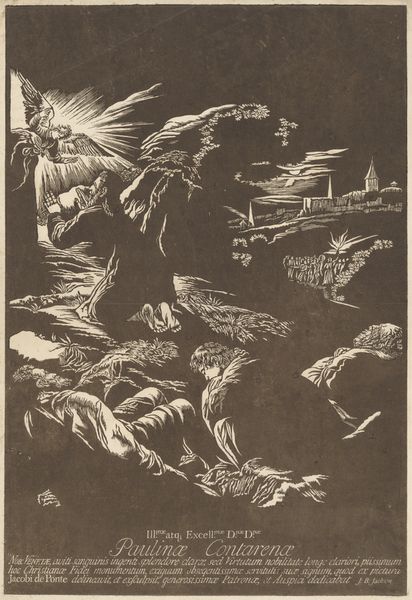
Copyright: National Gallery of Art: CC0 1.0
Curator: Let's consider Honoré Daumier's lithograph from 1871, titled "L'éclipse sera-t-elle totale?", or "Will the Eclipse be Total?". It's a poignant image created during a turbulent period in French history. Editor: Woah, heavy vibes. You've got this imposing shadow about to blot out… is that supposed to be Europe down below? All those frantic lines radiating light... I get a sense of looming dread, like a political doomsday clock ticking away. Curator: Precisely. Daumier created this as a political cartoon using lithographic ink on paper. Consider the means of production: printmaking allowed for wide distribution. Notice how he used symbolism: The spiked helmet, labeled "Liberté" ironically enough, casting the eclipse—suggesting Prussian military might threatening to overshadow France. The term Europe also appears in bold on the earth itself. Editor: Irony, absolutely! Slapping a "Liberté" label on what’s clearly a symbol of oppression feels like the ultimate dig. I find the scratchy lines unnerving too – they give a feeling of urgency, of something being hastily documented before it vanishes forever. Curator: And that’s the power of Daumier’s social critique. His skillful use of line and shading in the lithographic process doesn't just depict a scene; it embodies the anxieties and tensions of the time. The rapid production also points to how quickly political sentiment was shifting. The piece embodies that period's fears of encroaching tyranny after the Franco-Prussian War. Editor: It's crazy how a single image can capture an entire era's fears and uncertainties. You can almost feel the city holding its breath. For me, this artwork transcends the historical event and touches upon deeper fears about the vulnerability of ideals in the face of brute power. Curator: Indeed. Examining the material conditions – the availability of lithography, the political climate – allows us to see how Daumier used art as a form of resistance and social commentary. Editor: So true! It really pushes us to see artwork less as aesthetic objects, and more as little time capsules – capturing not only events but the overall *feeling* of a pivotal time. Heavy, but in an oddly beautiful way.
Comments
No comments
Be the first to comment and join the conversation on the ultimate creative platform.


